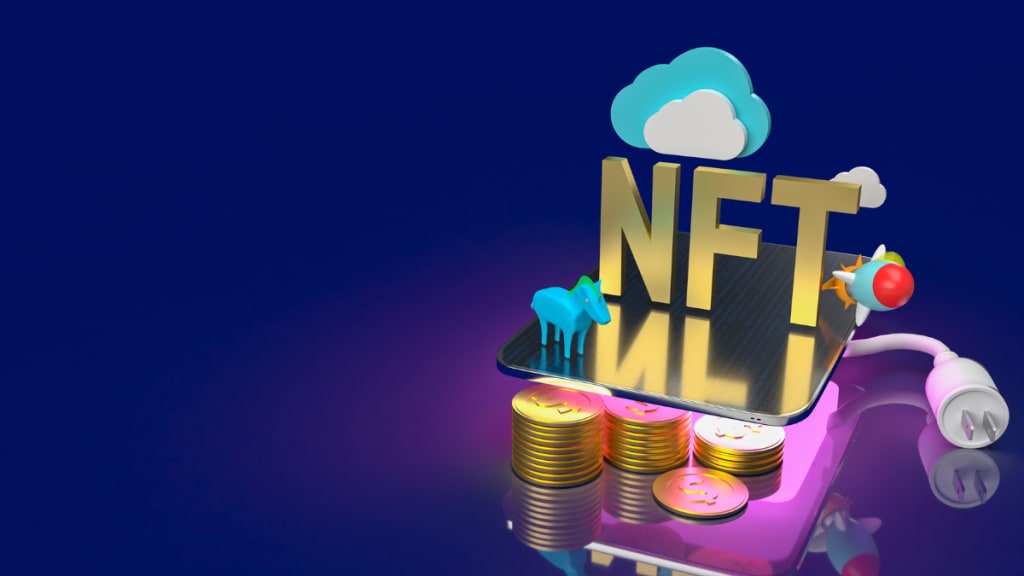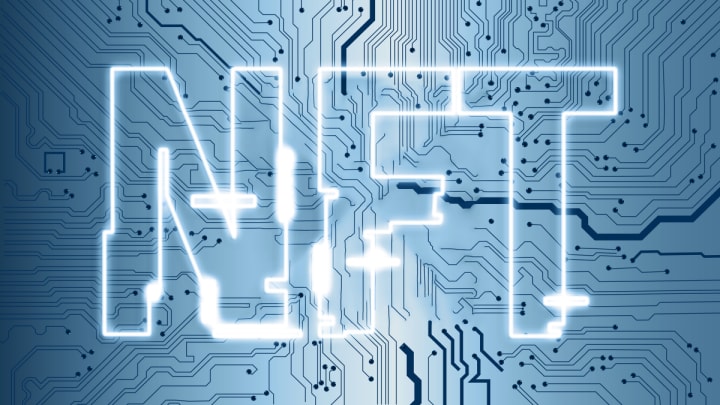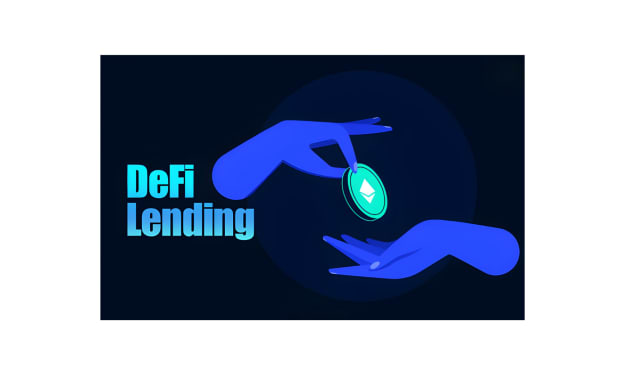Embrace the Future: Exploring NFT Development for Revolutionary Experiences
NFT Development

The future of digital innovation! In this exciting journey, we invite you to embrace the endless possibilities of NFT development and delve into revolutionary experiences that are shaping the way we create, collect, and interact with digital assets. In this exploration, we will uncover the transformative power of NFT development, which is revolutionizing the world of digital ownership. By harnessing cutting-edge technology and pioneering approaches, NFT development is pushing boundaries and unlocking new realms of creativity, authenticity, and value. Whether you are an artist, collector, or enthusiast, this guide will take you on a captivating journey, diving into the intricate world of NFT development and its profound impact on the digital landscape. So, fasten your seatbelt and get ready to embrace the future as we embark on an exploration of NFT development and the extraordinary experiences it holds.
Understanding NFTs
NFTs, or Non-Fungible Tokens, are unique digital assets that represent ownership or proof of authenticity for various digital or physical items. Unlike cryptocurrencies such as Bitcoin or Ethereum, which are interchangeable on a one-to-one basis, NFTs are one-of-a-kind and cannot be replicated or replaced. NFTs utilize blockchain technology to establish ownership and track transactions securely. They have gained popularity across various industries, enabling artists, musicians, athletes, and brands to monetise digital content and engage directly with their fans. NFTs have opened up new avenues for creators, providing greater control, financial opportunities, and a unique way to experience and collect digital assets in the increasingly digital world we live in.
Exploring the unique features of NFT's
NFTs, or Non-Fungible Tokens, possess several unique features that distinguish them from traditional digital assets. Let's explore these distinctive characteristics:
- Uniqueness:Each NFT is distinct and cannot be replicated, as it is built on blockchain technology that ensures its authenticity and provenance. This uniqueness adds value and rarity to digital assets.
- Indivisibility:NFTs cannot be divided into smaller units. They are whole entities, representing a complete item or artwork. This indivisibility ensures the integrity and uniqueness of the asset.
- Ownership and Authenticity: NFTs provide verifiable ownership and proof of authenticity. The blockchain technology underlying NFTs records ownership history and transaction details, ensuring transparency and preventing counterfeit assets.
- Interoperability:NFTs can be easily exchanged and transferred across different platforms and marketplaces, allowing for seamless interaction and tradeability between collectors, artists, and enthusiasts.
- Programmability: Smart contracts, often associated with NFTs, enable automatic royalty payments to creators whenever the NFT is sold or traded. This programmability provides ongoing revenue streams and empowers creators.
- Creative Potential: NFTs unlock new creative possibilities, enabling artists, musicians, and content creators to monetize their work directly, bypassing intermediaries. They can engage directly with their audience and explore innovative ways to interact with fans.
- Diverse Use Cases: NFTs extend beyond artwork and collectibles. They can represent various digital and physical assets, such as music, virtual real estate, domain names, virtual goods in video games, and more. The versatility of NFTs opens up limitless possibilities for asset tokenization.
The potential of NFTs to revolutionize various industries
NFTs, or Non-Fungible Tokens, have the potential to revolutionize numerous industries, disrupting traditional systems and unlocking new possibilities. Here are some industries where NFTs are making a significant impact:
- Art and Collectibles: NFTs have breathed new life into the art world by enabling artists to tokenize and sell their digital artworks directly to collectors. They provide proof of ownership and authenticity, revolutionizing the art market and allowing artists to receive royalties when their creations are resold.
- Music and Entertainment: NFTs are transforming the music and entertainment industries by offering new revenue streams and direct fan engagement. Musicians can tokenize exclusive content, concert tickets, or merchandise, creating unique experiences for their fans and fostering a closer relationship with their audience.
- Gaming and Virtual Real Estate: NFTs are reshaping the gaming landscape by allowing players to own and trade in-game assets. Virtual real estate, items, and characters can be tokenized as NFTs, providing players with true ownership and the ability to monetize their virtual possessions.
- Fashion and Luxury Goods: NFTs are disrupting the fashion and luxury goods industry by enabling brands to create limited-edition digital fashion items or tokenized ownership of physical luxury goods. NFTs provide scarcity and provenance, offering a new level of authenticity and value to consumers.
- Sports and Collectibles: NFTs are revolutionizing the sports industry by allowing fans to collect digital sports memorabilia and trading cards. These digital collectibles can be bought, sold, and traded on NFT marketplaces, creating a vibrant ecosystem around sports fandom.
- Intellectual Property and Licensing: NFTs have the potential to transform intellectual property management and licensing. They can provide creators with secure proof of ownership and streamline licensing agreements, ensuring that artists receive fair compensation for their work.
- Real Estate and Land Ownership: NFTs can tokenize real estate properties, allowing for fractional ownership and easier transfer of property rights. This innovation has the potential to simplify real estate transactions and increase liquidity in the market.
Key considerations for successful NFT development
Successful NFT development requires careful planning and attention to various key considerations. Here are some important factors to keep in mind:
- Conceptualization and Unique Value Proposition: Define a clear concept for your NFT project and identify its unique value proposition. Understand the target audience, market demand, and how your NFT will stand out among others. Research and explore creative ideas to ensure your NFT offers something distinctive and appealing.
- Legal and Intellectual Property Rights: Understand the legal and intellectual property implications of your NFT project. Ensure that you have the necessary rights and permissions for any copyrighted or licensed content. Consider consulting with legal experts to navigate the complexities of intellectual property laws and ensure compliance.
- Blockchain Platform Selection: Choose a suitable blockchain platform that aligns with your project requirements. Consider factors such as scalability, transaction fees, community support, and the platform's compatibility with the standards and protocols you intend to use. Conduct thorough research to select a platform that provides a robust infrastructure for your NFT development.
- Smart Contract Development and Auditing: Develop secure and well-audited smart contracts that govern the creation, ownership, and transfer of NFTs. Ensure that your smart contracts are thoroughly tested, audited by experts, and free from vulnerabilities or potential exploits. Robust smart contracts are essential for maintaining the integrity and trustworthiness of your NFTs.
- User Experience and Interface Design: Prioritize user experience (UX) and intuitive interface design to attract and engage users. Create user-friendly platforms or marketplaces where users can easily discover, buy, sell, and interact with your NFTs. Consider incorporating features like search functions, filters, and personalized recommendations to enhance the user experience.
- Community Engagement and Marketing Strategy: Develop a comprehensive marketing strategy to create awareness and generate interest in your NFT project. Engage with the community through social media, forums, and collaborations with influencers or artists. Cultivate a vibrant and supportive community around your NFTs to drive adoption and increase visibility.
- Scalability and Sustainability: Anticipate scalability challenges and plan for the future growth of your NFT project. Consider the potential increase in transaction volume, user activity, and network congestion. Explore solutions such as layer 2 scaling or sidechains to ensure a seamless experience for users as your project expands.
- Ongoing Support and Maintenance: Provide ongoing support, updates, and maintenance for your NFT project to address user feedback, fix issues, and improve functionalities. Regularly monitor the platform's performance, security, and user satisfaction to ensure a positive experience for participants.
NFT Development Process
The NFT development process involves several essential stages that ensure the successful creation and deployment of unique digital collectibles. Here is an overview of the key steps:
- Ideation and Conceptualisation: In this stage, the vision and concept for the NFT project are defined. The team brainstorms ideas, identifies target audiences, and determines the unique value proposition of the NFTs. This phase involves researching market trends, exploring creative possibilities, and establishing the overall direction of the project.
- Smart Contract Development: Smart contracts play a crucial role in NFTs, as they define the rules and functionalities governing ownership and transactions. During this stage, developers create and code the smart contracts that will power the NFT ecosystem. Security, functionality, and scalability are carefully considered to ensure the robustness of the smart contracts.
- Token Creation and Minting: With the smart contracts in place, the next step is to turn assets or digital creations into unique NFTs. This involves minting the tokens on the chosen blockchain platform. Metadata, such as descriptions, images, or attributes, may be added to enhance the uniqueness and value of each NFT. Minting ensures the individuality and immutability of each digital collectible.
- Integration and Deployment: Once the NFTs are minted, they need to be connected with platforms and marketplaces to enable their discoverability, buying, and selling. Integration with NFT marketplaces or custom-built platforms allows users to interact with the NFTs, view their details, and participate in transactions. This stage involves ensuring seamless connectivity and compatibility with the chosen platforms.

Future of NFT Development
The future of NFT development holds immense potential, driven by emerging trends and exciting opportunities. Here are some key areas that are shaping the future landscape of NFT development:
- Technological Advancements and Innovations:As technology continues to evolve, NFT development is expected to benefit from advancements such as improved blockchain scalability, lower transaction fees, and enhanced interoperability. Innovations in decentralized storage solutions, consensus mechanisms, and layer 2 scaling solutions are likely to facilitate more efficient and sustainable NFT ecosystems.
- Integration of NFTs with Virtual Reality (VR) and Augmented Reality (AR): The convergence of NFTs with VR and AR technologies opens up new frontiers for immersive experiences. By combining NFTs with virtual and augmented environments, users can interact with digital assets in unprecedented ways. Virtual galleries, virtual fashion showrooms, and AR-enhanced collectibles are just a glimpse of the possibilities that lie ahead, offering unique and engaging experiences for NFT enthusiasts.
- Potential Applications in Real Estate, Fashion, Sports, and More: NFTs are not limited to art and collectibles; they have the potential to revolutionize various industries. In real estate, NFTs can enable fractional ownership, streamline property transactions, and enhance liquidity. The fashion industry can leverage NFTs for limited-edition digital fashion items and verifiable authenticity. Sports organizations can explore NFTs for tokenized sports memorabilia, fan engagement, and unique experiences. These are just a few examples of how NFTs can disrupt and innovate traditional sectors.
The future of NFT development is filled with opportunities for creators, collectors, and businesses. It will be essential to keep an eye on emerging technologies, explore novel use cases, and prioritize user experiences. As NFT adoption continues to grow, the industry will witness further maturation, increased mainstream acceptance, and novel applications that will redefine digital ownership and engagement.
FAQs
Q1: What is the primary purpose of NFT development?
The primary purpose of NFT development is to enable the creation, ownership, and trading of unique digital assets, revolutionizing the concept of ownership in the digital world. NFTs provide verifiable proof of authenticity and ownership, empowering creators, collectors, and enthusiasts to engage in decentralized ecosystems and experience revolutionary digital experiences.
Q2: How are NFTs different from cryptocurrencies like Bitcoin?
While cryptocurrencies like Bitcoin are fungible, meaning they are interchangeable on a one-to-one basis, NFTs are non-fungible and represent unique items or digital collectibles. Each NFT possesses distinct characteristics, making it irreplaceable and unique, unlike cryptocurrencies that are mutually interchangeable.
Q3: Can NFTs only be used for digital artwork and collectibles?
No, NFTs have a wide range of applications beyond digital artwork and collectibles. They can be utilized in various industries such as music, fashion, real estate, sports, and more. NFTs have the potential to revolutionize these industries by enabling digital ownership, unique experiences, and new monetization opportunities.
Q4: How can NFT development benefit creators and artists?
NFT development provides creators and artists with new avenues to monetize their work directly, bypassing intermediaries. By tokenizing their creations as NFTs, artists can receive royalties when their NFTs are resold, ensuring ongoing revenue streams. NFTs also allow artists to engage directly with their fan base, fostering a closer relationship and providing exclusive experiences to their supporters.
Q5: Are NFTs environmentally friendly?
NFTs, like other blockchain-based technologies, have raised concerns about their environmental impact due to the energy consumption associated with blockchain networks. However, efforts are being made to develop more sustainable and eco-friendly solutions, such as exploring alternative consensus mechanisms and utilizing energy-efficient blockchains, to mitigate the environmental footprint of NFT development.
Conclusion
In conclusion, embracing the future of NFT development opens up a world of revolutionary experiences and possibilities. By exploring the innovative realm of NFTs, we venture into a landscape where digital ownership is redefined, creativity flourishes, and new economic opportunities arise. NFT development allows us to push the boundaries of art, collectibles, and digital assets, empowering creators, collectors, and enthusiasts to participate in a decentralized and immersive ecosystem. As we navigate this transformative journey, we invite you to embrace the future of NFT development, where revolutionary experiences await, and where the boundaries of digital ownership are expanded, reimagined, and reinvented.
About the Creator
Albert Peter
Passionate About Empowering Others In Blockchain Technology.
Enjoyed the story? Support the Creator.
Subscribe for free to receive all their stories in your feed. You could also pledge your support or give them a one-off tip, letting them know you appreciate their work.






Comments
There are no comments for this story
Be the first to respond and start the conversation.